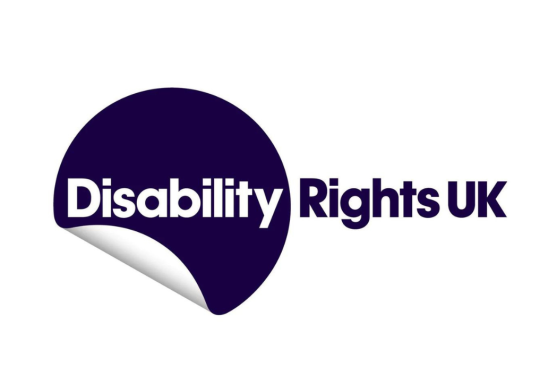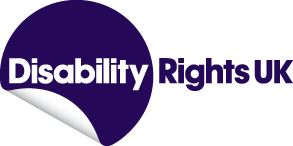Promoting physical activity to Disabled people: An online resource to support Disabled People’s Organisations (DPOs)
These guidance notes are aimed at Disabled People's Organisations (DPOs) and are divided into different sections for ease of use. They provide an explanation of the key principles with additional hyperlinks for those people wanting in-depth information and real-life examples.
Contents
Why is physical activity important?
How to involve Disabled people in physical activity
What can you do as an individual?
What can you do as an organisation?
Physical Activity Opportunities for Disabled people
Use of personal budgets to be active
Why is physical activity important?
According to Sport England, Disabled people are twice as likely to be physically inactive (41%) than those without a disability (20%). This means that Disabled people are missing out on all the wide-ranging benefits that physical activity can bring such as the:
Physical benefits:
- Improving sleep
- Enhancing coordination
- Strengthening balance
- Maintaining a healthy weight
- Reducing risk of developing long term conditions
Social benefits:
- Having fun with friends
- Meeting new people
- Feeling part of the community
- Reducing loneliness
Mental health benefits:
- Reducing stress
- Managing anxiety
- Improving your self-esteem
- Reducing the risk of depression
Being physically active does not have to be complicated – it simply means moving our bodies more in any way we are able to. This also does not have to mean running marathons or training every day at the gym – it could be walking/wheeling into town or doing some gardening.
More information: UK Chief Medical Officers’ Physical Activity Guidelines
How to involve Disabled people in physical activity
Disabled people, like everyone, want to enjoy physical activity, become fitter and stay well. What is most important is to find activities that will be fun, enjoyable, and that make you feel good! It does not have to involve spending lots of money or committing to the same activity every week, the key is that the person you support gets to move more and have fun in the process.
However, Disabled people can encounter barriers, which make getting involved in physical activity challenging. It makes sense for organisations trying to encourage more Disabled people to get involved in activity and sport to talk to them about the barriers they encounter and involve them in the design, development and delivery of their services. This will help to remove these barriers and is sometimes called co-production.
Below are some basic checklists of things to think about when planning to make the services provided by your organisation more accessible to more Disabled people. This first one can be used as a personal checklist, the second is for your organisation. These tips are designed to help you make small changes that can lead to big differences in Disabled people becoming (and feeling) involved.
What can you do as an individual?
- Ask the expert: Start from a place of understanding that Disabled people are the ones who have experienced barriers and are best placed to make suggestions on how they could be removed.
- Listen: Allow time for everyone to get their voices heard. Act on feedback or be honest about why something cannot happen. Try to respond positively to being challenged.
- Don’t make assumptions: The issues that one Disabled person faces may be completely different to those of another. That’s why it’s important to ask and listen.
- Access: Is the start time of an activity or meeting right? Can people get in the building and use the facilities with ease? Have you publicised the activity in an accessible way? Are personal assistants and carers factored into numbers?
- Ask and listen in advance: Find out what people need to access the activity (you might have to re-think the room, and time), some people might need printed material in large print or need sign language interpreters. Allow enough time for this part of planning the activity.
What can you do as an organisation?
Understand and address barriers. Broadly speaking, these can be split into the following three areas:
- Physical – e.g. lack of ramps, steps in the physical environment or equipment
- Attitude of staff & other people using your service e.g. negative attitudes about disability, staff lacking disability equality training
- Policies – e.g. inflexible working policies, such as no time off for hospital appointments or recruitment policies that discriminate against Disabled people
Involve Disabled People
How do you review your activity provision and/or services? Could you involve people with lived experience as experts in designing questionnaires, data collection and evaluation of your services?
Co-Production
Co-production is where everybody works together on an equal basis to create a service or decide what works for everyone. When services are genuinely co-produced, they generally work better. This is because co-produced solutions make the most of the shared expertise of the professionals and the people who have direct experience of using them.
Staff Training
Do you provide training to your staff about disability awareness and equality? Or specific training on how activities/sport can be made inclusive for all? Do you involve people who have lived experience of disability, long term health conditions or mental health issues as trainers?
A proper strategy
Enabling more Disabled people to use your services. Do you have a disability strategy? (Looking at how your services can attract more Disabled people and how you will attract more Disabled people to work in your organisation.) Were Disabled people involved in developing the strategy?
More information: Co-production explained
More information: Solutions to common barriers
More information: GYA’s Social Care Activity Pack
Physical Activity Opportunities for Disabled people
For those organisations that might be unable to provide physical activity opportunities directly themselves to Disabled people, there are a number of online resources to help find physical activity opportunities to promote to your beneficiaries.
Reach out to a local Active Partnership
These are locally based strategic organisations that want to make active lifestyles the norm for everyone. Each Active Partnerships has an online database of clubs, coaches and community groups providing physical activity.
More information: Active Partnerships
Find a local inclusive gym
Activity Alliance have an online data base that you can search to help find inclusive gyms in your area.
More information: Activity Alliance’s Inclusive gym finder
Active @ Home
For those who feel more comfortable being active at home there are a number of guides and adaptive workout videos freely available on Disability Rights UK’s Get Yourself Active (GYA) programme website. These resources have specifically been produced with Disabled people for Disabled people.
More information: GYA’s adaptive workout videos
More information: GYA’s adaptive workout guides
Get Yourself Active’s Social Care Activity Pack
Get Yourself Active’s Social Care Activity Pack contains a great variety of alternative ideas for being active, which don’t cost anything. For example, going on a sensory nature hunt, creating a journey stick, and creating nature mandalas. The pack was created by GYA in collaboration with Sport England, Durham University, Sense and several other disability organisations.
More information: GYA’s Social Care Activity Pack, p47
Use of personal budgets to be active
Personal health budgets are an amount of money to support an individual’s identified health and well-being needs, planned and agreed upon between the individual and their local NHS team. They can be an excellent way to meet an individual’s physical and mental health outcomes, including being active. There are misconceptions about what a personal budget can be used for. For example, some people believe they cannot be used for physical activity, but this is false. You are legally allowed to use a personal budget for physical activity as the purpose of the benefit is to support health and well-being needs, which physical activity is part of.
Below are some examples of how an individual may wish to use their personal budget to be active:
- Asking their Personal Assistant to support them to travel to and/or throughout physical activity or sports sessions
- Paying a physical activity or sports provider for sessions using direct payments
- Paying for adapted equipment to help an individual to get active
To be able to use a personal budget for physical activity, you need to make sure that physical activity and sport is written into the individual’s support plan if it meets their outcomes. Even if the funds from the personal budget cannot cover the session, it may help to pay for some of the costs.
More information: Using a personal budget to get active

Disability Rights UK is the UK's leading organisation led by, run by, and working for Disabled people. They work with Disabled People's Organisations and Government across the UK to influence regional and national change for better rights, benefits, quality of life and economic opportunities for Disabled people.
Get Yourself Active (GYA) is a programme run by the leading national user-led pan-disability charity Disability Rights UK. Since we began in 2015, we have worked tirelessly to increase Disabled people’s participation in sport and physical activity so that everyone can experience its benefits.
GYA strives to break down barriers so that every Disabled person can find ways to get active in their local area in a way that is right for them. Disabled people have a right to get active, and we want everyone to have the chance to feel good and have fun wherever they are.
